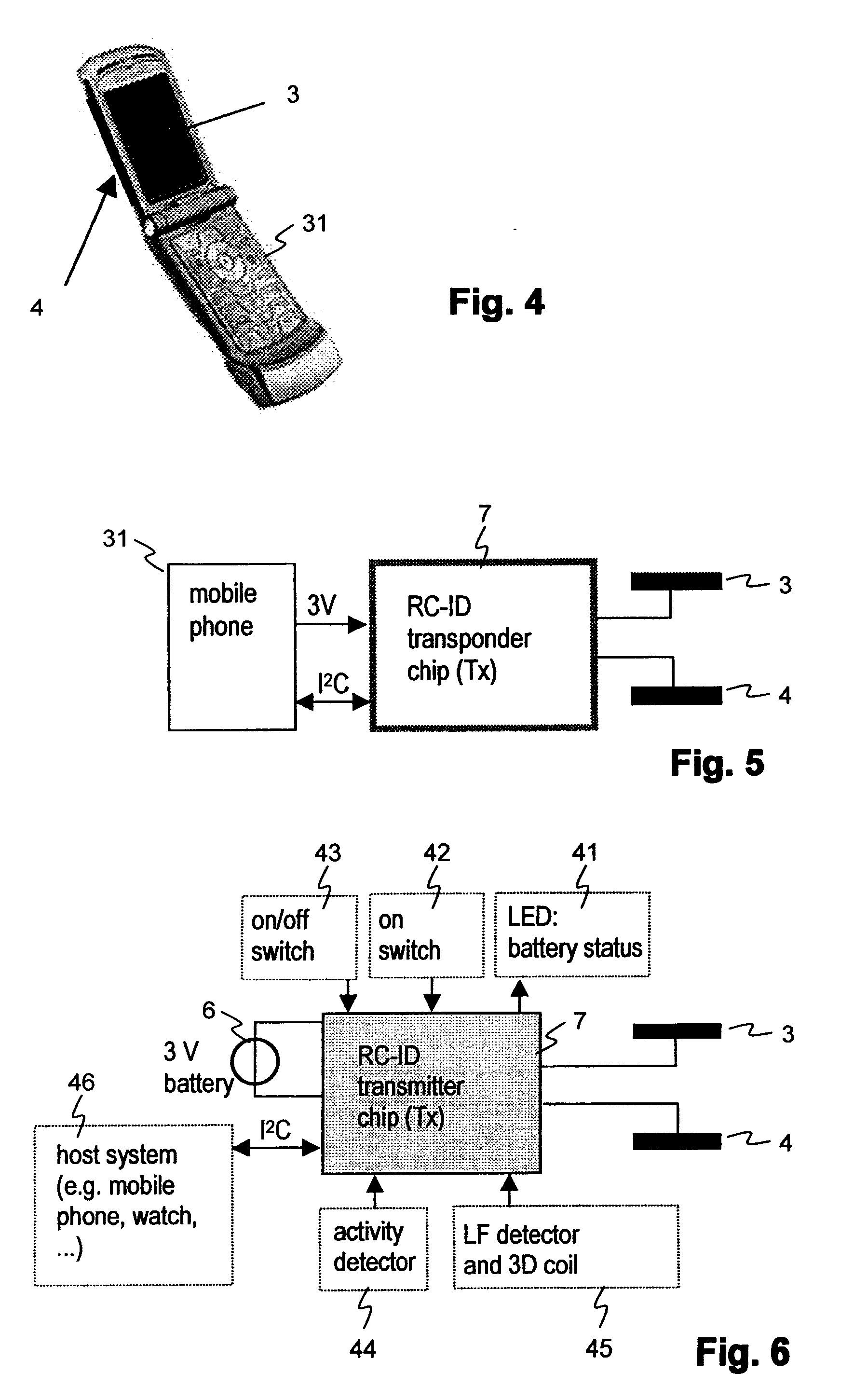System and portable device for transmitting identification signals
a technology of identification signal and system, which is applied in the direction of transmission, electrical equipment, instruments, etc., can solve the problems of inability to tolerate large amplitude (i.e. high voltage), small amount of data can be transmitted, and low signal-to-noise ratio, so as to increase the battery life and save power consumption
- Summary
- Abstract
- Description
- Claims
- Application Information
AI Technical Summary
Benefits of technology
Problems solved by technology
Method used
Image
Examples
Embodiment Construction
[0048]The portable device 1 according to FIG. 1 is in the depicted example designed in substantially a card shape and comprises a first electrode 3 and a second electrode 4. Between the first and the second electrode are arranged further elements, for example a plastic carrier 5 with integrated and / or applied electronic component parts and a battery compartment (not depicted in the figure). The integrated and / or applied electronic component parts can, for example, include the ASIC for control of the electrodes, an EEPROM memory, conductive pathways and / or further elements. Rather than plastic, the carrier can be of ceramic or of a different material, the important factor is simply that the two electrodes are electrically isolated from one another.
[0049]At least one of the electrodes can be at least partially transparent, in the depicted example, the first electrode 3. On an upper side of the plastic carrier 5, letters, pictures, etc. can be applied by known means such that they are ...
PUM
 Login to View More
Login to View More Abstract
Description
Claims
Application Information
 Login to View More
Login to View More - R&D
- Intellectual Property
- Life Sciences
- Materials
- Tech Scout
- Unparalleled Data Quality
- Higher Quality Content
- 60% Fewer Hallucinations
Browse by: Latest US Patents, China's latest patents, Technical Efficacy Thesaurus, Application Domain, Technology Topic, Popular Technical Reports.
© 2025 PatSnap. All rights reserved.Legal|Privacy policy|Modern Slavery Act Transparency Statement|Sitemap|About US| Contact US: help@patsnap.com



